
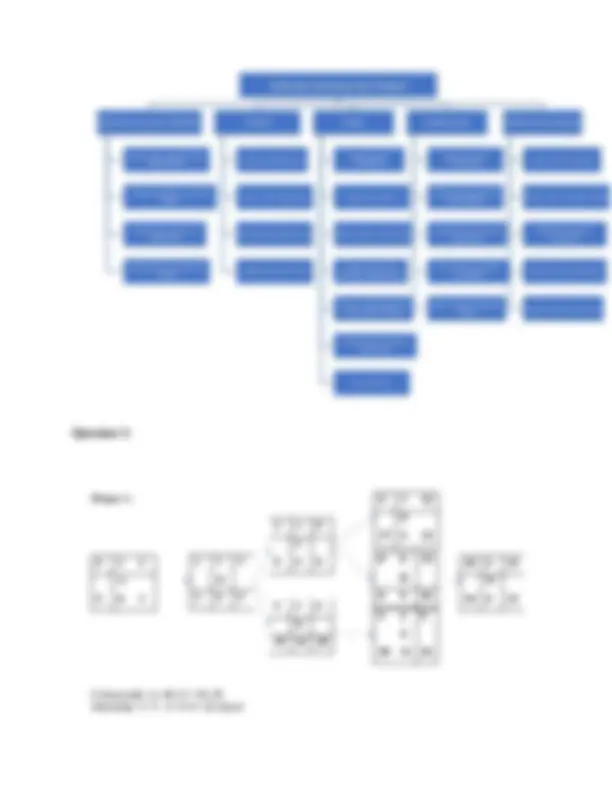

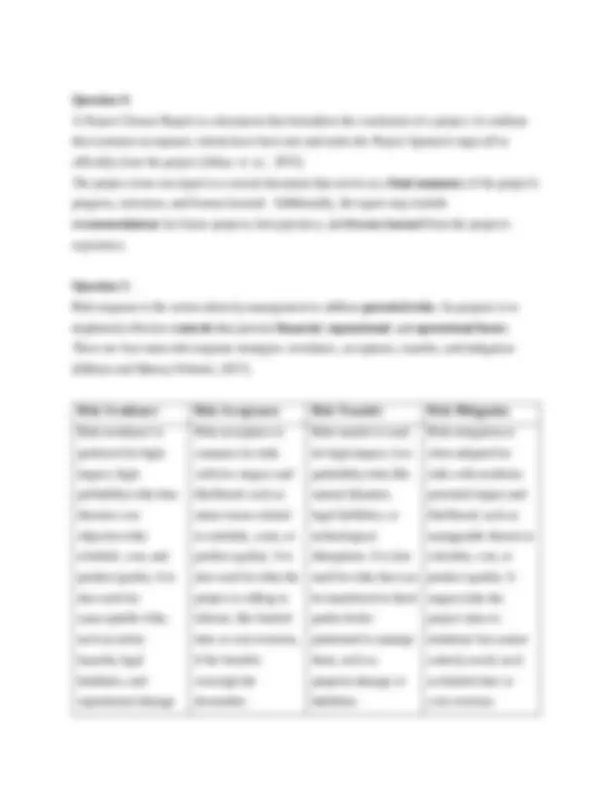
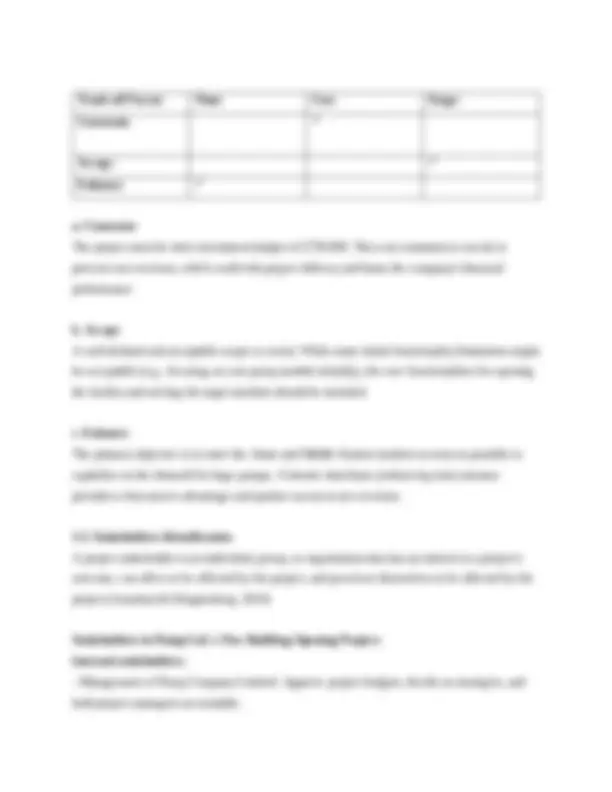
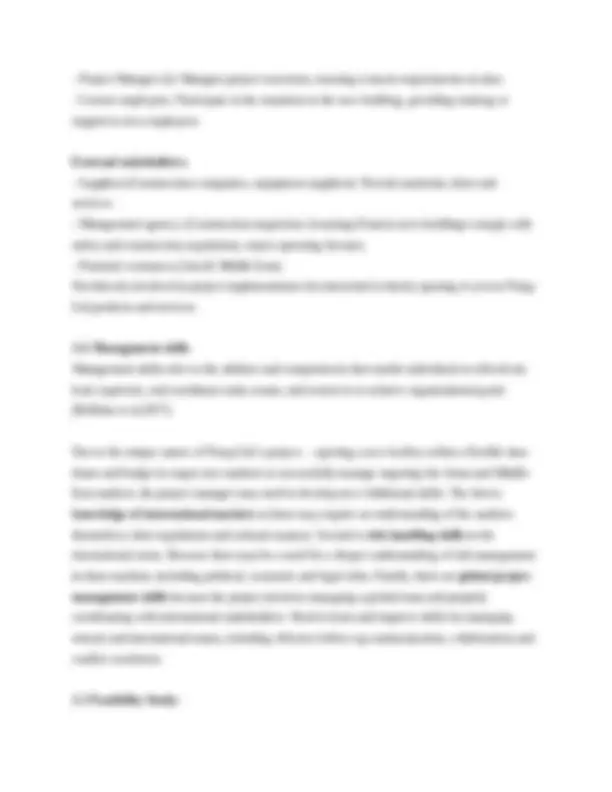
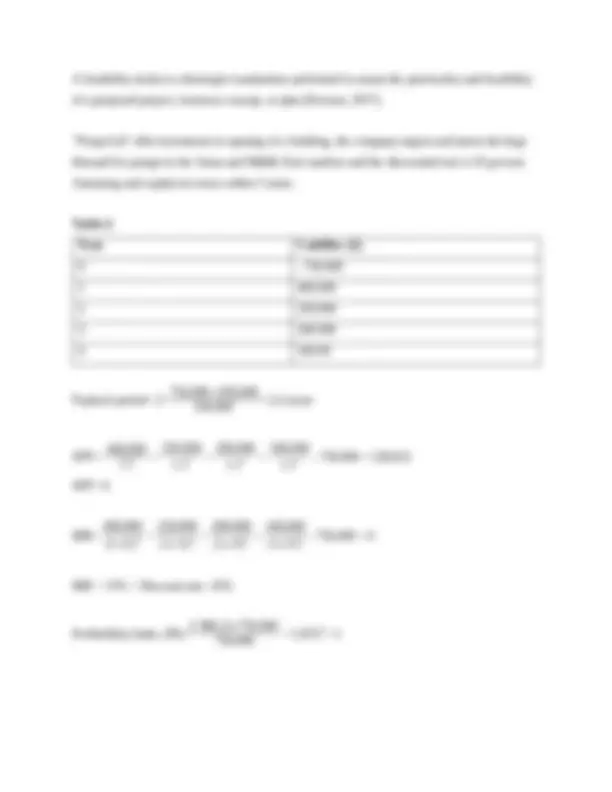

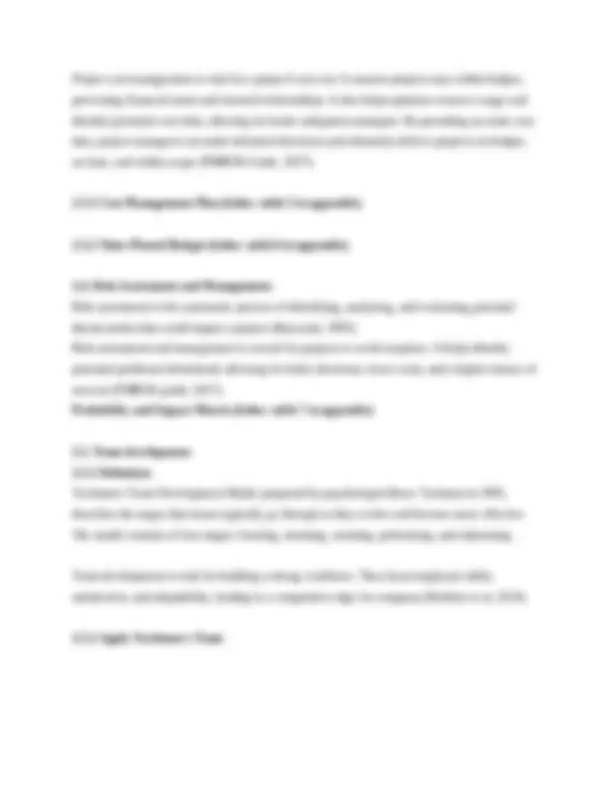
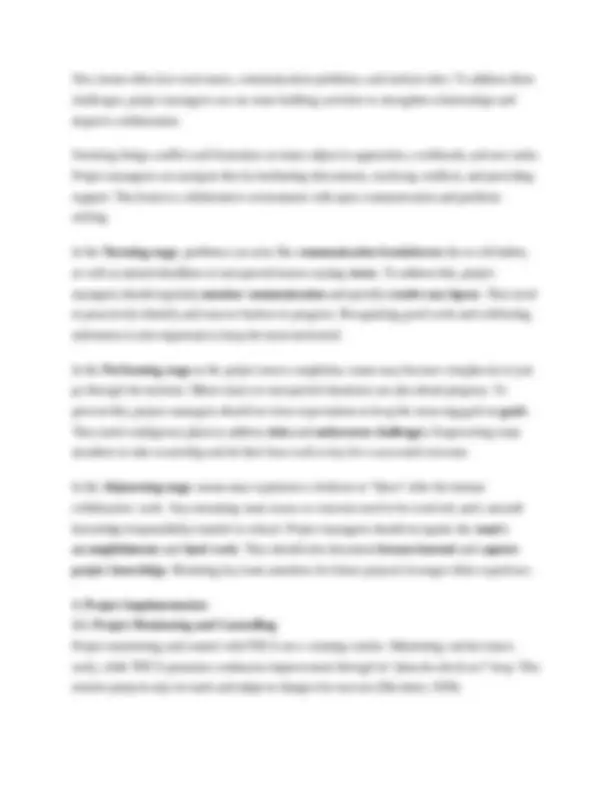

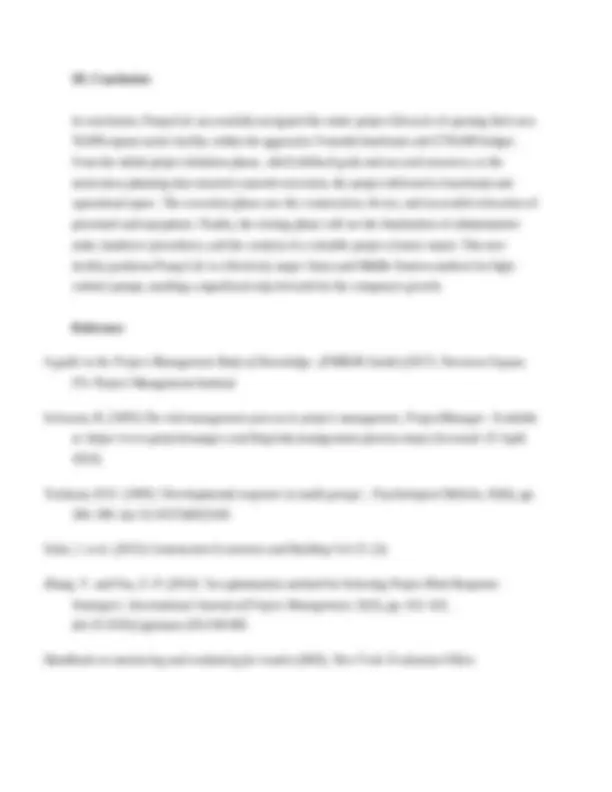
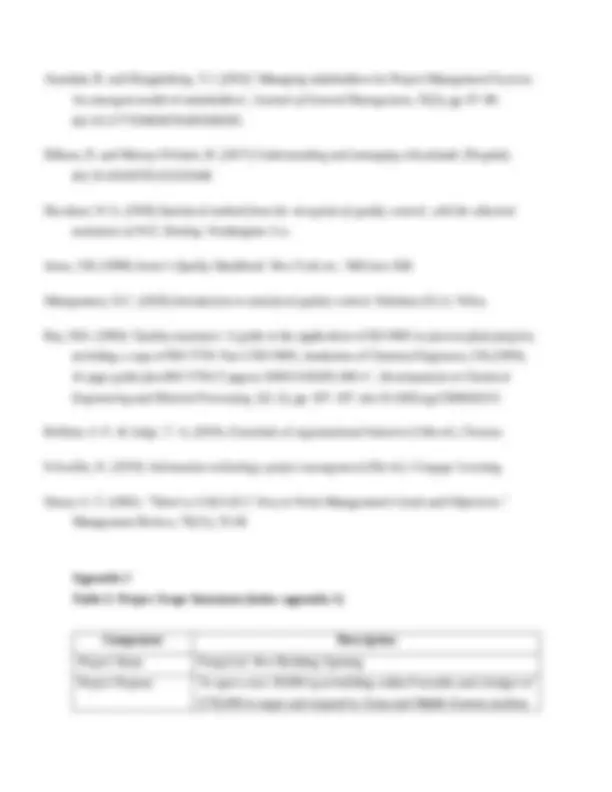
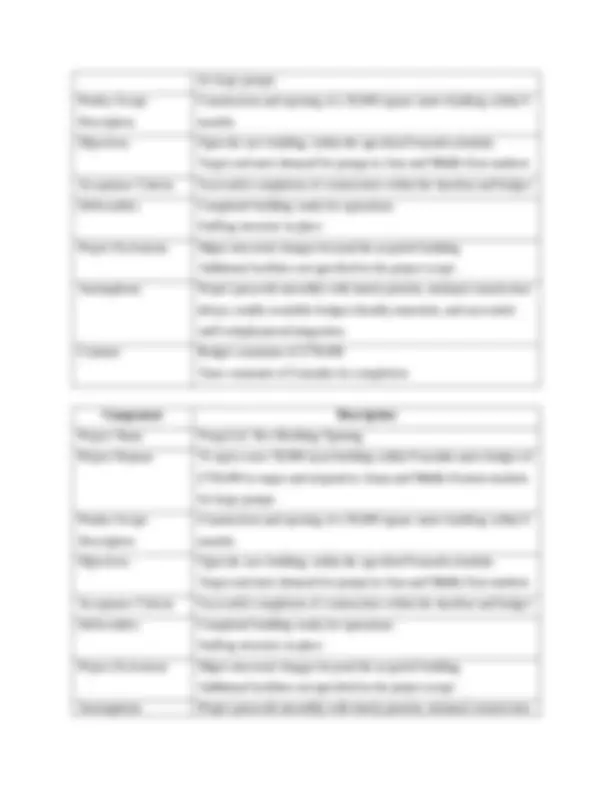
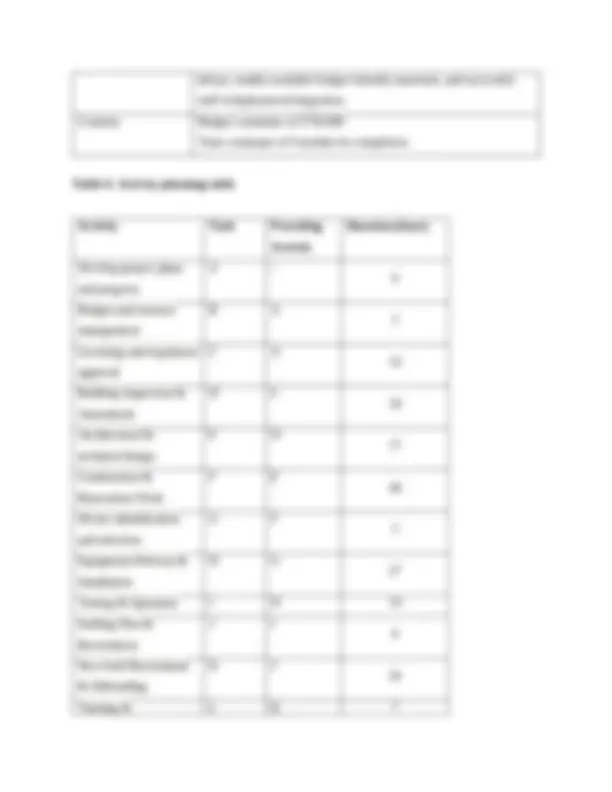
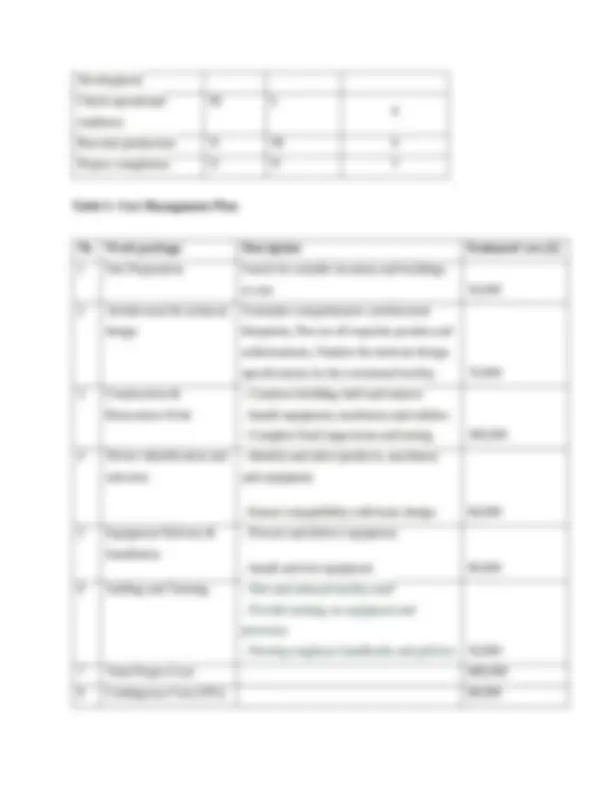

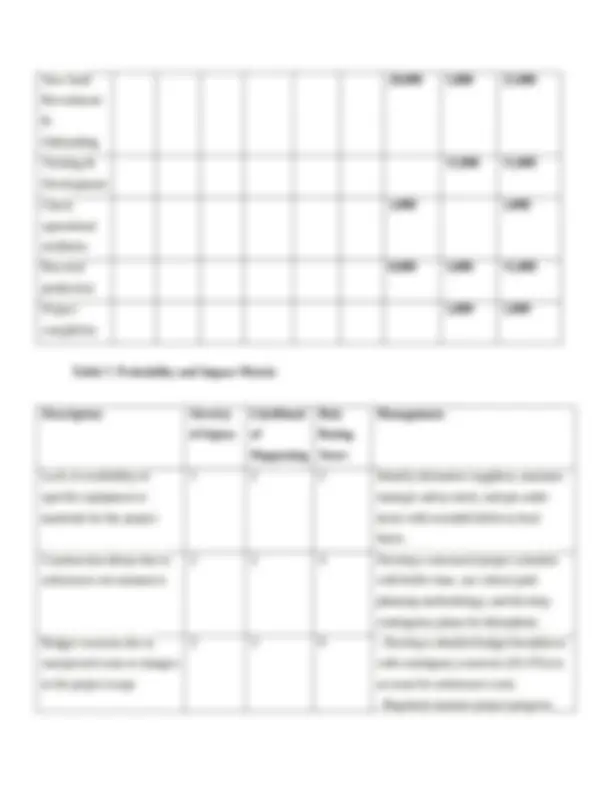



Study with the several resources on Docsity

Earn points by helping other students or get them with a premium plan


Prepare for your exams
Study with the several resources on Docsity

Earn points to download
Earn points by helping other students or get them with a premium plan
Community
Ask the community for help and clear up your study doubts
Discover the best universities in your country according to Docsity users
Free resources
Download our free guides on studying techniques, anxiety management strategies, and thesis advice from Docsity tutors
An in-depth analysis of the project closure phase, emphasizing its importance for project managers. It discusses the role of the work breakdown structure (wbs) in project implementation, the estimation of time and resources required for each task, and the identification of resources needed for each task. The document also covers the definition and purpose of quality auditing, the smart criteria for setting objectives, and the identification of stakeholders in a project. Additionally, it explains the concepts of risk response and risk acceptance, and the importance of team building activities in addressing challenges during project execution. The document concludes with a discussion on project closure, including completion, handover, and acceptance.
Typology: Cheat Sheet
1 / 26

This page cannot be seen from the preview
Don't miss anything!



















Task 1 Question 1 :
A project life cycle encompasses the stages of a project's development, divided into four distinct phases: Initiation, Planning, Execution, and Closing. (PMBOK Guide, 2017) The closing phase is of paramount importance for project managers as it signifies formal project completion, ensures client satisfaction, fulfills contractual obligations, captures lessons learned, finalizes financial matters, celebrates success, and plans for transition. It is a critical phase that allows project managers to tie up loose ends and conclude the project on a successful note. Question 2: A Work Breakdown Structure (WBS) is a hierarchical decomposition of the project scope into smaller, manageable parts, outlining tasks and deliverables needed to accomplish project objectives. (Seyedhoseini et al., 2009). The example below illustrates the essence of a WBS by hierarchically dividing a project into smaller, manageable tasks that are logically organized and structured. It also allows for better planning, resource allocation, and progress tracking throughout the development process. The WBS plays an important role in project implementation because by dividing the project into smaller parts, the WBS makes it easier to allocate resources and assign responsibilities. Second, project managers can estimate the time and effort required for each task, allowing for better planning and resource allocation. Third, project managers can identify the resources (such as people, equipment, and materials) needed for each task and allocate them accordingly. The WBS below allows the project manager to evaluate project performance and identify any deviations from the original plan. (PMBOK Guide, 2017).
Question 4: A Project Closure Report is a document that formalizes the conclusion of a project. It confirms that customer acceptance criteria have been met and seeks the Project Sponsor's sign-off to officially close the project (Johan et al., 201 5 ). The project close-out report is a crucial document that serves as a final summary of the project's progress, outcomes, and lessons learned. Additionally, the report may include recommendations for future projects, best practices, and lessons learned from the project's experience. Question 5: Risk response is the action taken by management to address potential risks. Its purpose is to implement effective controls that prevent financial , reputational , and operational losses. There are four main risk response strategies: avoidance, acceptance, transfer, and mitigation (Hillson and Murray-Webster, 2017). Risk Avoidance Risk Acceptance Risk Transfer Risk Mitigation Risk avoidance is preferred for high- impact, high- probability risks that threaten core objectives like schedule, cost, and product quality. It is also used for unacceptable risks, such as safety hazards, legal liabilities, and reputational damage Risk acceptance is common for risks with low impact and likelihood, such as minor issues related to schedule, costs, or product quality. It is also used for risks the project is willing to tolerate, like limited time or cost overruns, if the benefits outweigh the downsides. Risk transfer is used for high-impact, low- probability risks like natural disasters, legal liabilities, or technological disruptions. It is also used for risks that can be transferred to third parties better positioned to manage them, such as property damage or liabilities. Risk mitigation is often adopted for risks with moderate potential impact and likelihood, such as manageable threats to schedule, cost, or product quality. It targets risks the project aims to minimize but cannot entirely avoid, such as limited time or cost overruns
The Project Life Cycle includes several distinct stages that a project progresses through from start to finish. These stages are typically identified as initiation, planning, execution, monitoring and controlling, and closure (Bridges, 2023).
1. Project Initiation 1.1. Identify objectives: The SMART criteria, often used in project management, stands for Specific, Measurable, Achievable, Relevant, and Time-bound. It provides a framework for setting clear and actionable goals (Doran, 1981). Objective : Open a recently acquired building (50,000 sq m) within 9 months to serve Asian and Middle Eastern markets for large pumps, utilizing a £750,000 budget.. SMART application:
Trade off Factor Time Cost Scope Constrain Accept Enhance a. Constrain The project must be strict investment budget of £750,000. This cost constraint is crucial to prevent cost overruns, which could risk project delivery and harm the company's financial performance b. Accept A well-defined and acceptable scope is crucial. While some initial functionality limitations might be acceptable (e.g., focusing on core pump models initially), the core functionalities for opening the facility and serving the target markets should be included. c. Enhance The primary objective is to enter the Asian and Middle Eastern markets as soon as possible to capitalize on the demand for large pumps. A shorter timeframe ( enhancing time ) streams provides a first-mover advantage and quicker access to new revenue. 1.3. Stakeholders Identification A project stakeholder is an individual, group, or organization that has an interest in a project's outcome, can affect or be affected by the project, and perceives themselves to be affected by the project (Assudani & Kloppenborg, 2010) Stakeholders in Pump Ltd.'s New Building Opening Project: Internal stakeholders:
A feasibility study is a thorough examination performed to assess the practicality and feasibility of a proposed project, business concept, or plan (Kerzner, 2017). "Pump Ltd" offer investment to opening of a building, the company targets and meets the huge demand for pumps in the Asian and Middle East markets and the discounted rate is 10 percent. Assuming and capital recovery within 3 years. Table 2: Year Cashflow (£) 0 - 750. 1 400. 2 250. 3 200. 4 100. Payback period= 2+
= 2,4 years NPV=
IRR = 13% > Discount rate -10% Profitability Index (PI)=
Pump Ltd. plans to open a new 50,000 sq m building within 9 months to target Asian and Middle Eastern pump markets. Mirroring existing staff initially, positive financials indicate this is a viable and valuable expansion opportunity. In terms of non-financial aspects , it is advisable to invest in the project because the issue is urgent because the company needs to open a new building within 9 months to take advantage of the huge demand for pumps in the Asian and Middle East markets. The project's foundations is bolstered by the current state of technology , and although the organization has yet to venture into the international market, the company possesses sufficient technical expertise to undertake and complete the endeavor, as evidenced by its successful execution of previous projects. Given that modern pump technology is well-established, this undertaking does not necessitate groundbreaking advancements. Pump Ltd's existing technical prowess may prove adequate to equip effectively and manage the new facility. The project is expected to be completed within 9 months , a relatively short time frame, and according to estimates the project will be completed about 1 month earlier. From a financial standpoint, investing in this effort is a wise move because the payback period of 2.4 years is considered fast compared to the 3-year target, demonstrating the ability to recoup the initial capital in a relatively short time frame fast. Moreover, the positive net present value (NPV) of £38,812.23 is a testament to the project's financial viability and its potential to augment the company's value proposition. Furthermore, the internal rate of return (IRR) of 13% surpasses the cost of capital, indicating that the project is anticipated to generate a profit that exceeds the requisite rate of return. Furthermore, the Profitability Index (PI) compares the project's present value of cash inflows to the initial investment. A PI greater than 1 suggests the project is expected to generate a return on investment greater than the initial cost. Collectively, these financial indicators are concordant with sound financial principles, and an investment in this project is likely to yield profitable returns for "Pump Ltd."
2. Project Planning 2.1. Project Scope:
2.3 Project Cost Project Cost Management is the process of estimating, budgeting, and controlling costs throughout the project lifecycle to ensure that expenditures remain within the approved budget (Leonard, 2023).
Project cost management is vital for a project's success. It ensures projects stay within budget, preventing financial strain and strained relationships. It also helps optimize resource usage and identify potential cost risks, allowing for better mitigation strategies. By providing accurate cost data, project managers can make informed decisions and ultimately deliver projects on budget, on time, and within scope (PMBOK Guide, 2017). 2.3.1 Cost Management Plan (below table 5 in appendix) 2.3.2 Time-Phased Budget (below table 6 in appendix) 2.4. Risk Assessment and Management : Risk assessment is the systematic process of identifying, analyzing, and evaluating potential threats (risks) that could impact a project (Baccarini, 1995). Risk assessment and management is crucial for projects to avoid surprises. It helps identify potential problems beforehand, allowing for better decisions, lower costs, and a higher chance of success (PMBOK guide, 2017). Probability and Impact Matrix (below table 7 in appendix) 2.5. Team development 2.5.1 Definition Tuchman's Team Development Model, proposed by psychologist Bruce Tuckman in 1965, describes the stages that teams typically go through as they evolve and become more effective. The model consists of four stages: forming, storming, norming, performing, and adjourning. Team development is vital for building a strong workforce. They boost employee skills, satisfaction, and adaptability, leading to a competitive edge for company (Robbins et al, 2019). 2.5.2 Apply Tuchman's Team
Pump Ltd. can leverage the PDCA cycle to effectively manage the opening of their new building within the tight timeframe and budget. Plan
Quality management is a systematic approach to ensuring that products or services consistently meet or exceed customer expectations (Ray, 1994) 3.2.1 Quality assurance Quality assurance is a set of systematic activities implemented within an organization to ensure that products or services meet specified requirements and standards (Peach, 2003) Pump Ltd's main focus is on ensuring quality assurance and environmental responsibility through adherence to internationally recognized standards and independent certifications. By implementing the ISO 9001 Quality Management System and achieving ISO 14001 certification, the company prioritizes delivering high-quality products and services while minimizing its environmental impact. Accreditations from reputable bodies like the Bureau of Indian Standards further validate Pump Ltd's commitment to excellence. This multifaceted approach, encompassing quality management systems, environmental stewardship, and external accreditations, highlights the company's dedication to meeting customer requirements, regulatory compliance, and sustainability. 3.2.2 Quality control Quality control (QC) is a process-oriented approach within quality management focused on monitoring and evaluating the quality of products or services to ensure they meet defined standards and requirements (Montgomery, 2020). Project managers need to use operational techniques to ensure quality standards are met. Furthermore, they also need to monitor project outcomes and deliverables to check that they meet the desired standards, and take alternative actions if necessary 3.2.3 Quality audit Quality audit is a systematic examination of the quality management system, processes, and activities within an organization to assess their effectiveness, compliance with standards, and identify areas for improvement (Russell, 2005).
III. Conclusion In conclusion, Pump Ltd. successfully navigated the entire project lifecycle of opening their new 50,000-square-meter facility within the aggressive 9-month timeframe and £750,000 budget. From the initial project initiation phase, which defined goals and secured resources, to the meticulous planning that ensured a smooth execution, the project delivered a functional and operational space. The execution phase saw the construction, fit-out, and successful relocation of personnel and equipment. Finally, the closing phase will see the finalization of administrative tasks, handover procedures, and the creation of a valuable project closure report. This new facility positions Pump Ltd. to effectively target Asian and Middle Eastern markets for high- volume pumps, marking a significant step forward for the company's growth. Reference A guide to the Project Management Body of Knowledge: (PMBOK Guide) (2017). Newtown Square, PA: Project Management Institute. Schwartz, B. ( 1995 ) The risk management process in project management , ProjectManager. Available at: https://www.projectmanager.com/blog/risk-management-process-steps (Accessed: 25 April 2024). Tuckman, B.W. (1965) ‘Developmental sequence in small groups.’, Psychological Bulletin , 63(6), pp. 384–399. doi:10.1037/h0022100. Fahri, J. et al. (2015) Construction Economics and Building Vol 15. (3). Zhang, Y. and Fan, Z.-P. (2014) ‘An optimization method for Selecting Project Risk Response Strategies’, International Journal of Project Management , 32(3), pp. 412–422. doi:10.1016/j.ijproman.2013.06.006. Handbook on monitoring and evaluating for results (2002). New York: Evaluation Office.
Assudani, R. and Kloppenborg, T.J. (2010) ‘Managing stakeholders for Project Management Success: An emergent model of stakeholders’, Journal of General Management , 35(3), pp. 67–80. doi:10.1177/030630701003500305. Hillson, D. and Murray-Webster, R. (2017) Understanding and managing risk attitude [Preprint]. doi:10.4324/9781315235448. Shewhart, W.A. (1939) Statistical method from the viewpoint of quality control; with the editorial assistance of W.E. Deming. Washington: S.n. Juran, J.M. (1998) Juran’s Quality Handbook. New York etc.: McGraw-Hill. Montgomery, D.C. (2020) Introduction to statistical quality control. Hoboken (N.J.): Wiley. Ray, M.S. (1994) ‘Quality assurance: A guide to the application of ISO 9001 to process plant projects, including a copy of BSI 5750: Part 1/ISO 9001, Institution of Chemical Engineers, UK (1993). 41 page guide plus BSI 5750 (7 pages). ISBN 0‐85295‐300‐3.’, Developments in Chemical Engineering and Mineral Processing , 2(2–3), pp. 187–187. doi:10.1002/apj.5500020215. Robbins, S. P., & Judge, T. A. (2019). Essentials of organizational behavior (14th ed.). Pearson. Schwalbe, K. (2019). Information technology project management (9th ed.). Cengage Learning. Doran, G. T. (1981). "There's a S.M.A.R.T. Way to Write Management's Goals and Objectives." Management Review, 70(11), 35-36. Appendix 1 Table 3: Project Scope Statement (below appendix 1) Component Description Project Name Pump Ltd. New Building Opening Project Purpose To open a new 50,000 sq m building within 9 months and a budget of £750,000 to target and respond to Asian and Middle Eastern markets